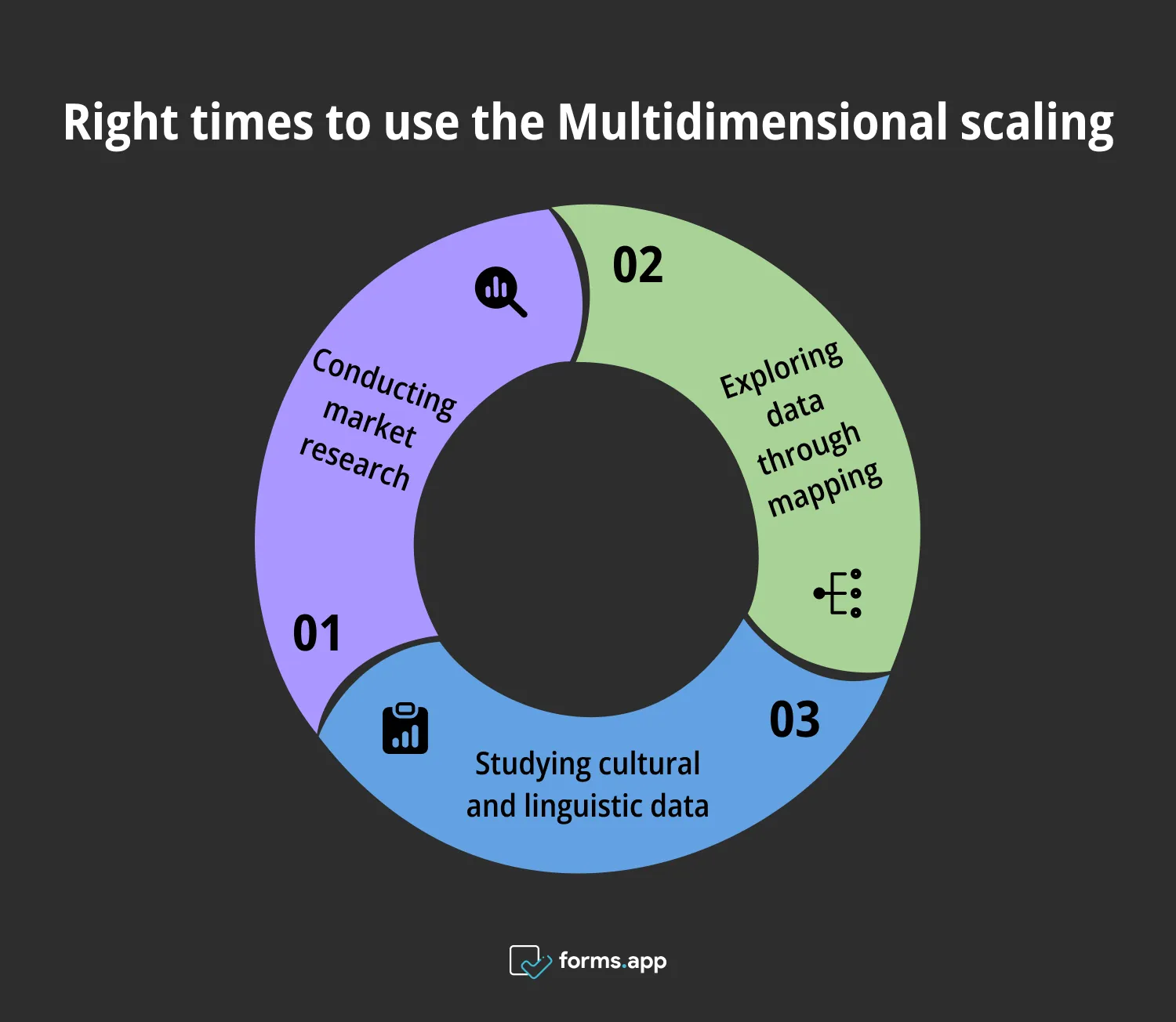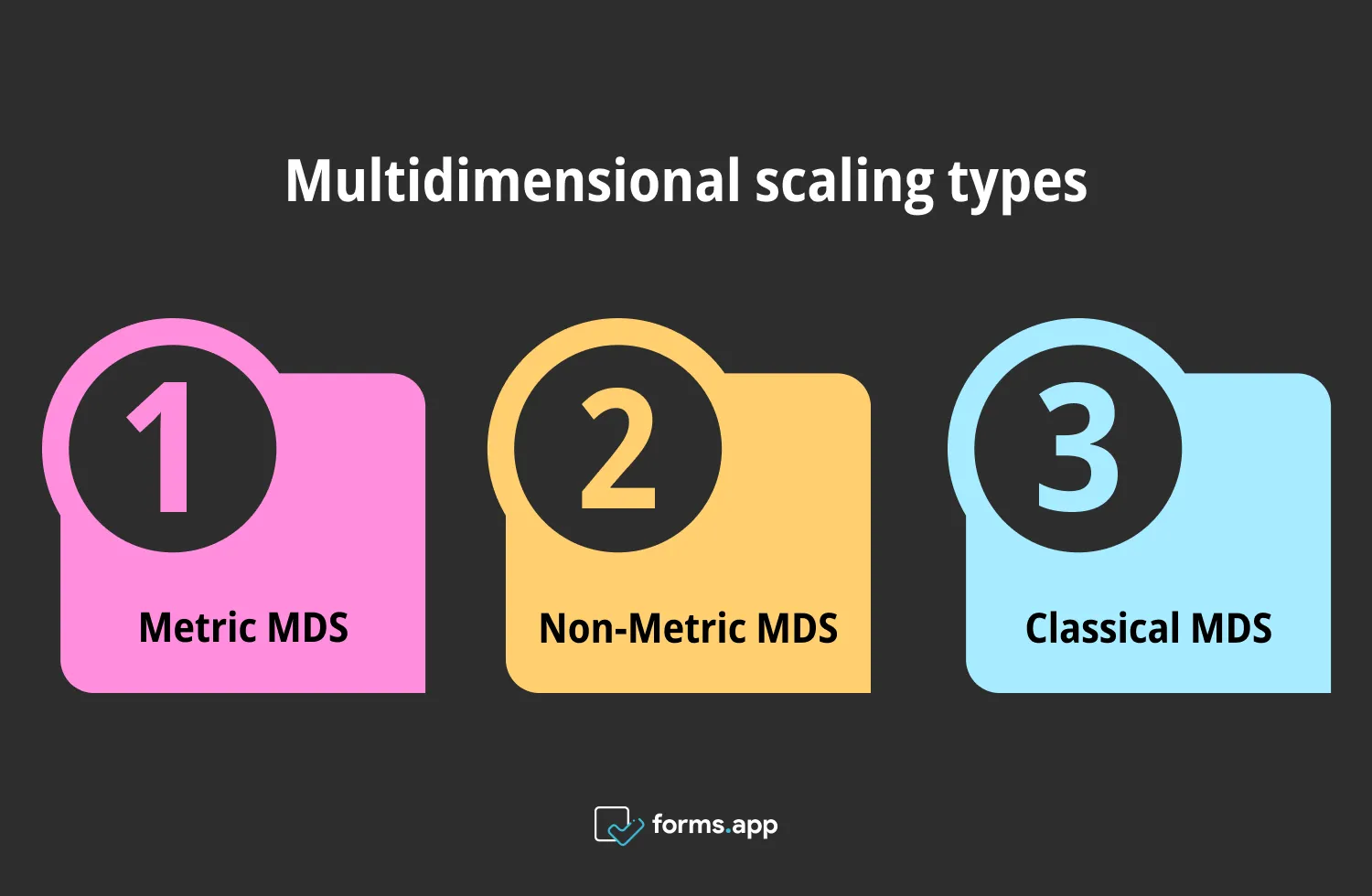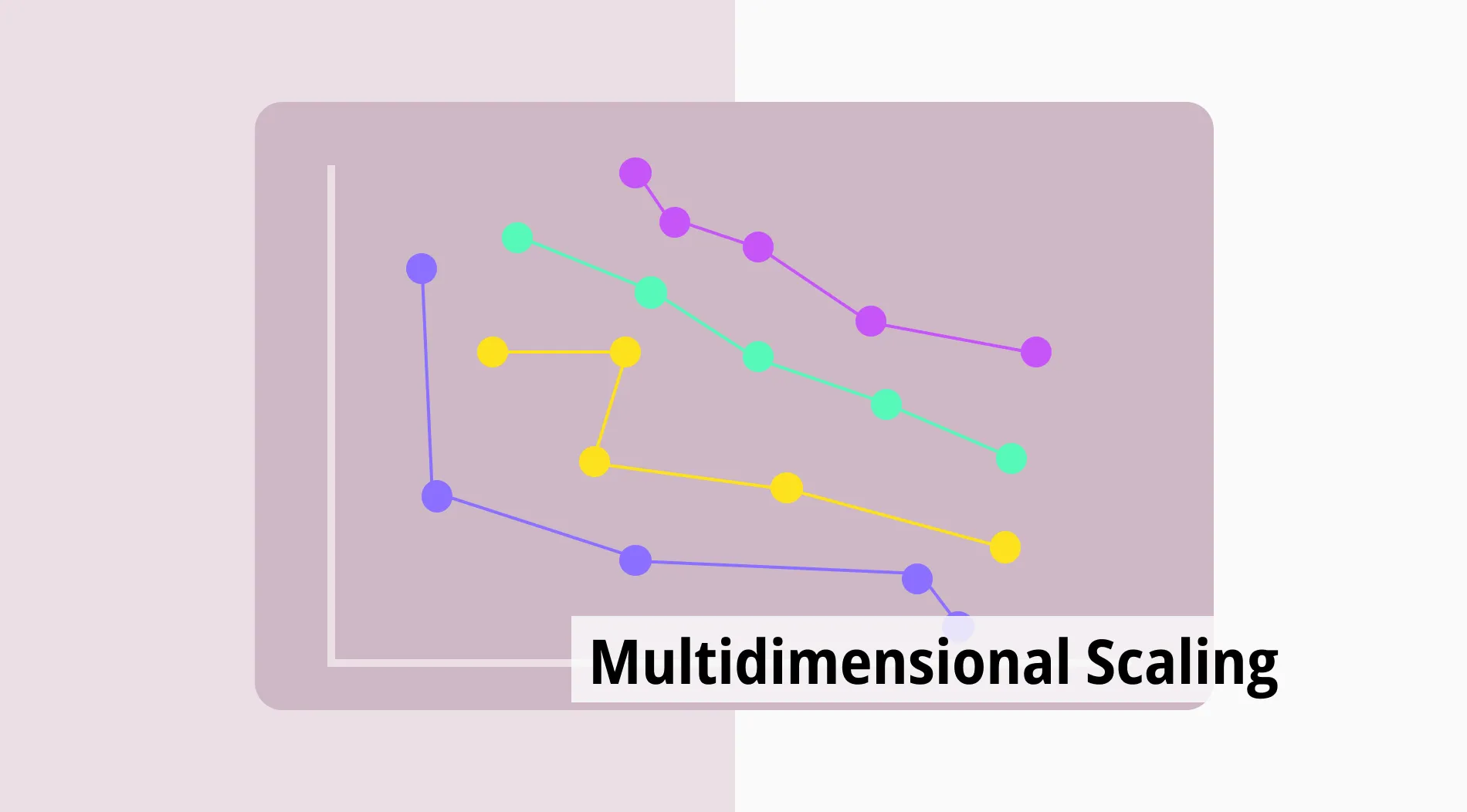Just as you can see the distance you want to reach when you use Google Maps, you can adapt a very similar system to see the distances between data points. If you are wondering how to do this mapping, the answer is multidimensional scaling.
Multidimensional scaling is a statistical tool that takes into account the similarities and differences in the data and places them on a new plane according to their distances. The purpose of this article is to provide you with a multidimensional scaling tutorial. To learn more, let’s start with the definition!
What is Multidimensional scaling (MDS)?
Multidimensional scaling (MDS) is a statistical technique used in data analysis to reduce the number of dimensions in high-dimensional data.
By doing so, the data are visualized for easier analysis and interpretation. MDS's area of use is quite wide: it is used to make critical decisions in market research, psychology, sociology, geography, health, education, and biology.
When to use the Multidimensional scaling
Multidimensional scaling visualizes complex data, making it useful in various times and situations. It is ideal for understanding critical points before, during, and after any research. When doing any research, there may be exact times when you might need to use it:

Correct times to use the Multidimensional scaling
⏰ When conducting market research: In this respect, MDS becomes very valuable during market research when knowledge of consumer perception and preference is required. It can visualize the similarities between products, services, or companies, showing their position in the competitive atmosphere. Businesses can use this insight to adjust marketing strategies and provide better service to their customers.
⏰ When exploring data through mapping, MDS visualizes complex data and reduces it to a lower-dimensional space. This allows one to see more easily the patterns and relationships in that dataset. It can also conserve relative distances of data points, which helps one see the underlying structure.
⏰ When studying cultural and linguistic data: MDS is used especially in sociology academic research, culture, and language studies because it facilitates geographical classification. It places the characteristics and patterns of cultures and languages at distances by considering the similarities and differences between them. Thus, it is an effective tool for cross-cultural studies.
Multidimensional scaling types
There are several types of multidimensional scaling that you can choose depending on the purpose of your research. Here, the three most commonly used types (metric, non-metric, and classical multidimensional scaling) will be explained:

Types of multidimensional scaling
1. Metric MDS: This type extends the optimization process to include different loss functions and input matrices with specified distances and weights. It reduces a cost function known as "stress," typically minimized through a method called stress majorization.
2. Non-Metric MDS: This technique is mostly used in examining qualitative data and understanding non-Euclidean relationships. It optimizes a "stress" function by taking into account a statically increasing function.
3. Classical MDS (Torgerson Scaling): This method is used to generate a coordinate matrix using an input matrix of dissimilarities between item pairs, aiming to minimize strain. It can be used when the data has Euclidean distance. Thus, it ensures that the distances are transferred as they are when transferring them to the new space.
Examples of Multidimensional scaling
Here, multidimensional scaling examples of its usage from two different areas will be given. It is recommended that you read these examples carefully, as they can be a guide in your analyses.
1. Linguistic study
Assume that there is a researcher who wants to create a map of dialects of a language based on their similarities and differences. The researcher uses the MDS technique in the following steps:
- Select linguistic features and measure a distance matrix for the dissimilarities between dialects. Set up language configuration in a lower dimensional space.
- Continuously readjust the positions of the dialects to preserve the original dissimilarities. This will minimize the stress function. Repeat the process until the stress function converges.
- Finally, visualize the set-up to show linguistic patterns and relationships.
2. Brand perception
Assume that there is a company that seeks to learn customer perception about their brand in the market environment. To visualize customer comments and their position in the market with MDS using survey data, it performs the following steps:
- Start collecting a distance matrix, which expresses consumer perceptions about the similarity or dissimilarity of various brands. Place the brands in a lower dimensional space.
- Adjust brand positions with repetitive actions, and this will minimize the stress function. Then, spatial relationships that reflect consumer perceptions will emerge. Continue adjustments until the stress function is stabilized.
- Finally, marketing strategies should be developed according to the resulting brand map.
Advantages of Multidimensional scaling
Multidimensional scaling has different benefits depending on which research area you use it in. For example, its benefit in the field of sociology is to be able to examine social structures on a visible and understandable level. Apart from that, it has generally such advantages as:
➕ Reduces the dimensionality of data while retaining essential information.
➕ It can test your hypotheses, provide resources for more complex analyses, and be an important basis for decision-making.
➕ It is applicable across various fields and data types thanks to its versatile nature. So you can use it in any research area without a problem.
➕ It can be used to reveal hidden structures in complex data sets and to show relationships between data points.
Frequently asked questions about the multidimensional scaling
This article gives a rough description of multidimensional scaling. Still, if you want to ask a critical point about which you are curious, you can check the frequently asked questions below.
There are several purposes of multidimensional scaling (MDS) you can utilize. Its main purpose is to visualize data points, which are mainly in two-dimensional space. While doing this, it tries to preserve the distance between data points as much as possible.
It is used to observe data point values better and visualize patterns and relationships. It is especially useful for helping you understand tables that contain complex relationships, and it saves you from getting lost among data points. Thus, it plays an important role in finding solutions to problems such as business market research.
Non-metric Multidimensional Scaling (NMDS) and Multidimensional Scaling (MDS) are statistical techniques used to visualize and explore the relationships between data points in a reduced-dimensional space. However, they differ in the ordering of the data points. NMDS is a flexible method you can use when there isn't a direct linear relationship between the dissimilarities and distances. It doesn't show the exact distances but preserves the rank order of them. On the other hand, MDS shows clearly the metric distances between data points. If you need a proper mapping technique for showing linear dissimilarities, then you should use MDS.
The multidimensional scaling algorithm key steps are as follows:
- First, build a dissimilarity matrix. It represents the pairwise distances between data points.
- Start the configuration of data points in the low-dimensional space.
- Then, shift the data points in space to minimize the stress function and repeat this process many times.
- Keep on improving this configuration until the stress function has converged.
- Stop the process when you reach the convergence and end the configuration for visualization and interpretation.
Principal Component Analysis (PCA) and Multidimensional Scaling (MDS) are both data visualization methods used to explore complex datasets. However, they proceed differently in terms of data input, linearity, and graphing of results. Unlike MDS, the PCA method requires quantitative data to build a structure.
PCA is used to display data in linear relationships in a linear form, but for MDS, it is not necessary for the data to be linear. In the visualization part of the data, PCA prepares a graph according to new variables known as principal components. On the other hand, MDS does not add new variables and places the data points on a certain plane according to the distances between them.
Conclusion
In conclusion, multidimensional scaling is a perfect tool for visualizing complex data for a comprehensible analysis. It provides insights into hidden relationships and patterns in various disciplines. This article will help you to get the most out of this powerful tool. The article first introduces you to the topic by explaining its definition, when to use it, and its types. Then, the article ends with two different examples of usage and listing its advantages.



